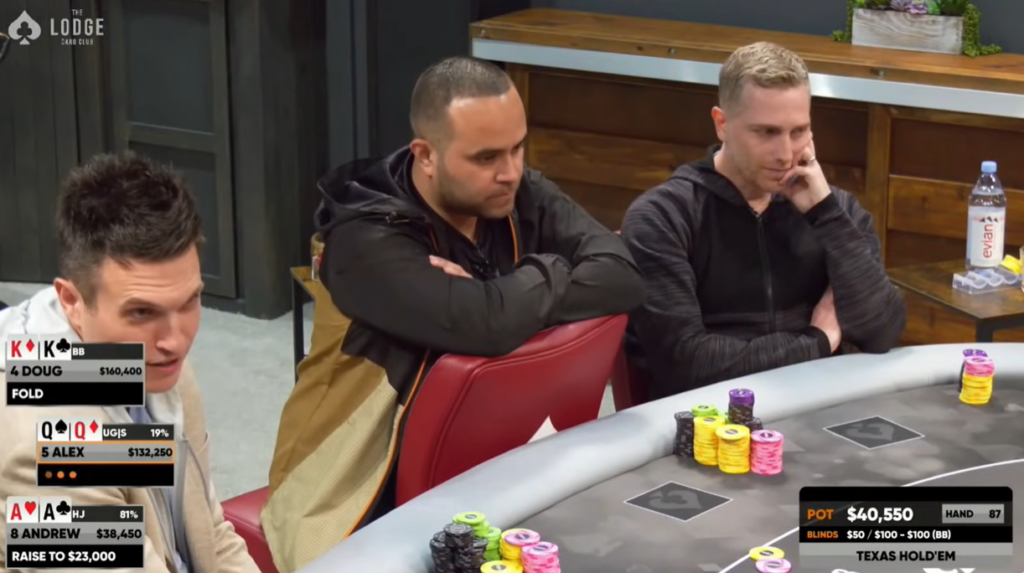In poker, the term “fold” represents one of the four basic moves you can make when the action is on you in a poker game.
To fold in poker is to surrender your cards and give up any chance of winning the pot. In most poker formats, you’ll fold far more than you take any other action.
Let’s take a look at what it means to fold in a game of poker:
What is Folding in Poker?
Fold is one of five moves a player can make when the action falls on them in a poker game. Those four decisions look like this:
Depending on the situation, some of these options might not be available when the action is on you. You can always fold when it comes your turn, however.
You should generally fold if there’s a bet or raise in front of you, and your hand isn’t strong enough to continue.
Examples of Folding in Poker
Let’s take a look at an example hand beginning to end, and see how folding (along with the other three basic actions) apply to a poker hand.
Folding Preflop
Each hand of poker begins with the preflop betting round (assuming you’re playing Hold’em, Omaha, or one of the many other games that use community cards).
The small blind and big blind post mandatory bets before the hand begins. The first player to act then gets the opportunity to either call the amount of the big blind, raise (make the active bet a higher amount), or fold.Once that player acts, all other players can either call, raise or fold.
If the action gets to you and you don’t have a hand that’s strong enough to open-raise preflop (or call an open-raise if a player in front of you has already opened), then you should fold.
In No-Limit Hold’em, you’ll end up folding around 70-80% of the time if you’re playing optimal preflop starting hand ranges.

Preflop Folding Hand Example
Let’s say you’re sitting in a $1/$3 No-Limit Hold’em game at the Lodge. The $1/$3 notation means the player in the small blind position posts a $1 mandatory bet before each hand. The big blind position must post $3.
Each player is then dealt two hole cards, and the preflop action begins with the player to the direct left of the big blind. That player can either call the big blind amount (putting $3 into the pot), raise (putting at least $6 in the pot), or fold.
Let’s say you’re sitting to the direct left of the big blind in the preflop round. When the action comes to you, you must at least call the $3 big blind to continue in the hand.
Open-raising (putting at least $6 in the pot) is the optimal play in this spot. If your hand isn’t strong enough to justify an open raise, or at very least a call of the $3 big blind, you should fold.
Folding Postflop
Once the preflop betting round ends, the hand goes to the flop. The amount of the active bet resets to zero.
If the amount of the active bet is zero when the action gets to you, you can check. Checking means not putting any money into the pot, and passing the action to the next player.
If a player does bet or raise in front of you in any postflop round, you must either call the bet/raise, re-raise, or fold.
At any point in a poker hand, if all players fold to the active bet/raise, the player that made that bet/raise wins the pot uncontested.
In the postflop betting rounds, if all players check, the hand proceeds to the next street. If all players in the final betting round (the river) check, all players still remaining in the hand show their cards, and the player with the best hand according to standard poker hand rankings wins the pot.
Note: The best players in the world fold preflop at least 70% of the time. It’s ok to fold in poker! If you can’t find the fold button preflop often enough, you’ll proceed to the postflop betting rounds far too often with hands that lose money in the long run.



